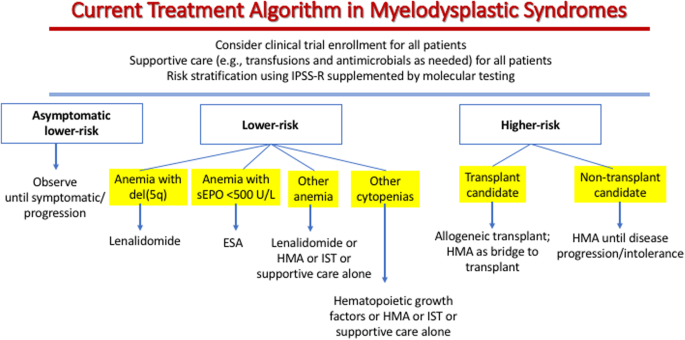

Only 1/14 patients (7%) with RA or RARS had an abnormal karyotype, whereas RCMD resembled RAEB in terms of the frequency (41 vs 50%, respectively) and type of karyotypic lesions. Erythroid hyperplasia and dyserythropoiesis are the main findings in bone marrow specimens of RA or RARS, but the major features in RCMD are multilineage proliferation and dysplasia, which, except for the lack of increased blasts resemble the findings in RAEB. Our results show that cytopenias in RCMD are more severe than those in RA or RARS, but are similar to those in RAEB. We compared the clinical, hematologic, morphologic and cytogenetic features of 18 such patients - for whose disease we propose the designation 'refractory cytopenia with multilineage dysplasia' (RCMD) - to those of 42 patients meeting the FAB criteria for RA or RARS (14 patients) and RAEB (28 patients). It has been suggested that these 'unclassifiable' cases form a distinct subset with a clinical behavior more like that of refractory anemia with excess of blasts (RAEB) than that of RA or RARS, but few studies have been undertaken that characterize this group.

Myelodysplastic syndromes (MDS) characterized by multilineage cytopenias and dysplasia but lacking an increase in blasts, with no Auer rods or monocytosis, do not exactly fit any of the categories of the French-American-British (FAB) classification of MDS and are often diagnosed as refractory anemia (RA), refractory anemia with ringed sideroblasts (RARS), or 'unclassifiable' MDS.


 0 kommentar(er)
0 kommentar(er)
